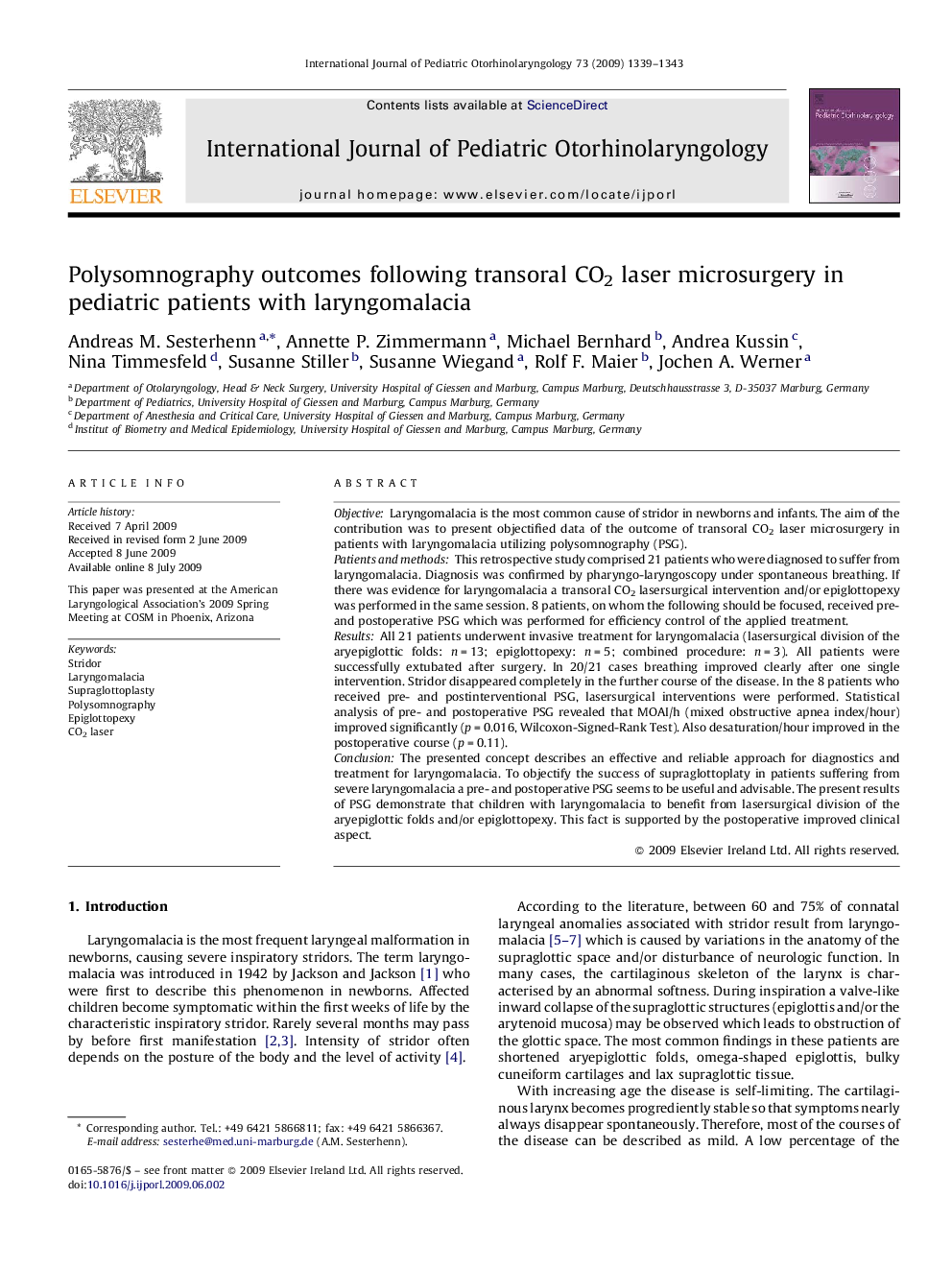| Article ID | Journal | Published Year | Pages | File Type |
|---|---|---|---|---|
| 4115168 | International Journal of Pediatric Otorhinolaryngology | 2009 | 5 Pages |
ObjectiveLaryngomalacia is the most common cause of stridor in newborns and infants. The aim of the contribution was to present objectified data of the outcome of transoral CO2 laser microsurgery in patients with laryngomalacia utilizing polysomnography (PSG).Patients and methodsThis retrospective study comprised 21 patients who were diagnosed to suffer from laryngomalacia. Diagnosis was confirmed by pharyngo-laryngoscopy under spontaneous breathing. If there was evidence for laryngomalacia a transoral CO2 lasersurgical intervention and/or epiglottopexy was performed in the same session. 8 patients, on whom the following should be focused, received pre- and postoperative PSG which was performed for efficiency control of the applied treatment.ResultsAll 21 patients underwent invasive treatment for laryngomalacia (lasersurgical division of the aryepiglottic folds: n = 13; epiglottopexy: n = 5; combined procedure: n = 3). All patients were successfully extubated after surgery. In 20/21 cases breathing improved clearly after one single intervention. Stridor disappeared completely in the further course of the disease. In the 8 patients who received pre- and postinterventional PSG, lasersurgical interventions were performed. Statistical analysis of pre- and postoperative PSG revealed that MOAI/h (mixed obstructive apnea index/hour) improved significantly (p = 0.016, Wilcoxon-Signed-Rank Test). Also desaturation/hour improved in the postoperative course (p = 0.11).ConclusionThe presented concept describes an effective and reliable approach for diagnostics and treatment for laryngomalacia. To objectify the success of supraglottoplaty in patients suffering from severe laryngomalacia a pre- and postoperative PSG seems to be useful and advisable. The present results of PSG demonstrate that children with laryngomalacia to benefit from lasersurgical division of the aryepiglottic folds and/or epiglottopexy. This fact is supported by the postoperative improved clinical aspect.
